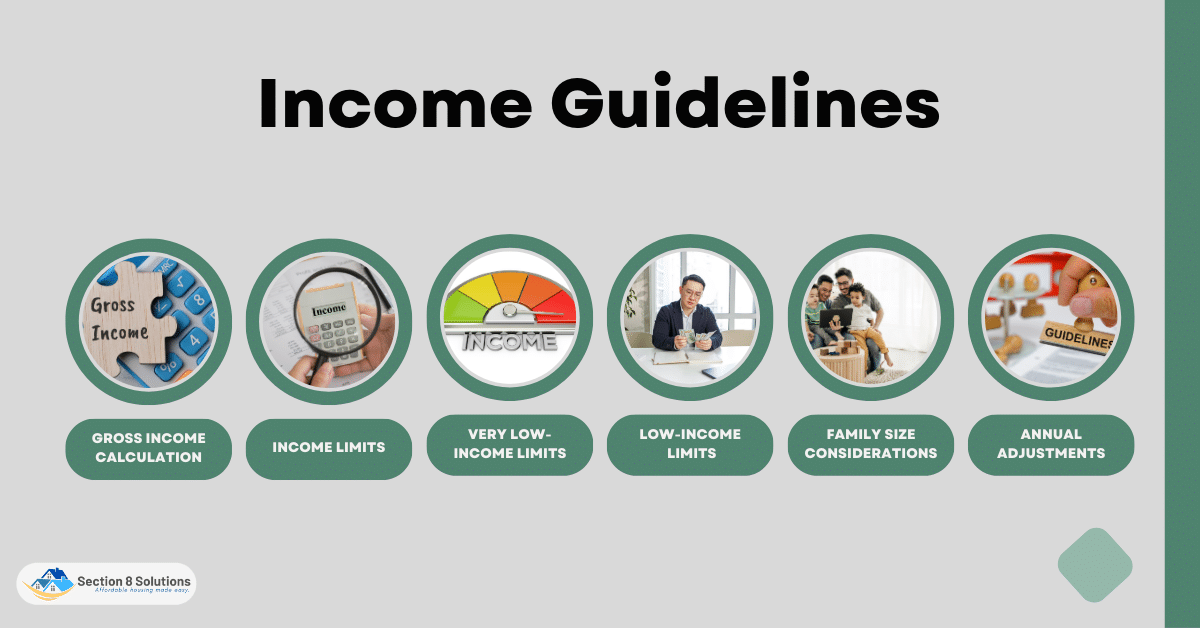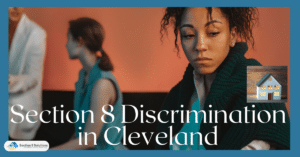In Colorado Springs, Section 8 housing assistance is provided to low-income individuals and families who meet specific income guidelines set by the Department of Housing and Urban Development (HUD). Eligibility is primarily determined by the applicant’s gross income, which must not exceed 50% of the area’s median income. Additionally, preference may be given to elderly or disabled applicants, as well as families with children.
In this guide, we will carefully walk you through the essential eligibility criteria for obtaining Section 8 housing assistance in Colorado Springs. Whether you’re an individual, a family, elderly, disabled, or have children, understanding these criteria is crucial to determine if you qualify for this valuable program.

Income Guidelines
Income eligibility is a crucial factor in determining who qualifies for Section 8 housing assistance in Colorado Springs. To ensure that the program benefits those most in need, the Department of Housing and Urban Development (HUD) has established specific income limits based on family size and the area’s median income. In this section, we will delve into the intricacies of these guidelines to help you understand if you meet the income criteria for Section 8 housing.

- Gross Income Calculation: The first step in determining eligibility is calculating the gross income of the household. This includes all sources of income from every member of the family, such as wages, Social Security, pensions, and more.
- Income Limits: HUD sets income limits annually, which vary depending on the area’s median income and family size. The goal is to provide assistance to those with the greatest need, so the lower the income compared to the area’s median, the higher the chances of qualifying.
- Very Low-Income Limits (VLI): HUD designates certain households as “very low-income,” typically those whose income is below 50% of the area’s median income. These households receive priority in the Section 8 program.
- Low-Income Limits (LI): Households with incomes between 50% and 80% of the area’s median income fall within the “low-income” category. While they may be eligible for Section 8, their priority status is lower compared to VLI households.
- Family Size Considerations: Income limits are directly related to the number of family members. Larger families usually have higher income limits than smaller ones, as their living expenses increase accordingly.
- Annual Adjustments: It’s essential to be aware that income limits are subject to change each year based on factors like inflation and economic conditions. Therefore, checking the latest guidelines is essential during the application process.
Understanding the income guidelines for Section 8 housing in Colorado Springs is a crucial step in determining your eligibility for this valuable program. Whether you belong to a very low-income household or fall within the low-income category, being well-informed about these guidelines will help you navigate the application process more confidently.
Household Composition
Household composition significantly impacts Section 8 housing eligibility, aiming to provide safe and affordable options for families and individuals in need. The program’s broad definition of a family includes related and non-related individuals living together as a single economic unit, encompassing various family structures and arrangements such as traditional families, single parents with children, individuals with disabilities, elderly individuals living alone, and unrelated individuals cohabiting.
Single individuals seeking Section 8 assistance, can qualify based on their income falling within the eligible range, and they are considered their own separate family unit. Local housing authorities may have specific preferences in place, giving priority to certain groups, such as veterans, seniors, or individuals with disabilities.
Families, defined as two or more people related by blood, marriage, adoption, or legal guardianship, are eligible for Section 8 housing assistance. This includes various family combinations, such as parents with children or extended family members living together. The size of the family plays a role in determining income eligibility, as larger families generally have higher income limits compared to smaller ones.

Preference Categories
The Section 8 housing program aims to prioritize those with the greatest need for housing assistance. To achieve this, specific preference categories have been established, granting applicants in these categories priority on the waiting list. In this section, we will delve into the preference categories that can provide applicants with priority, focusing on elderly or disabled individuals or families, as well as those with children.
1. Elderly or Disabled Individuals/Families
One of the primary preference categories is dedicated to elderly or disabled individuals and families. Elderly applicants, typically aged 62 or older, receive priority due to their vulnerability and often limited income sources in retirement. Disabled individuals and families also receive preference, as they may face additional challenges in finding suitable and accessible housing. To qualify under this category, applicants must provide documentation verifying their age or disability, such as government-issued identification or medical records.
2. Families with Children
The Section 8 program recognizes the importance of stable housing for families with children. As such, this category offers priority to households that include minor children, ensuring that young ones have a safe and supportive environment. Families applying under this preference must provide birth certificates or legal guardianship documents to verify the presence of children in the household.

3. Other Local Preferences
In addition to the federal preferences, local housing authorities may establish their own priorities based on the specific needs of their community. These preferences could include serving the homeless, victims of domestic violence, or individuals transitioning out of institutional settings. Each preference is designed to address the unique challenges faced by certain groups, offering targeted assistance to those who require it the most.
4. Documentation Requirements
Applicants claiming preference status must submit appropriate documentation to verify their eligibility. This may include birth certificates, government-issued identification, disability verification letters from healthcare professionals, or legal guardianship papers. The documentation serves as evidence to support the applicant’s position in the preferred category, increasing their chances of receiving Section 8 housing assistance promptly.
Understanding the preference categories in Section 8 housing is crucial for applicants seeking expedited assistance. These categories ensure that vulnerable individuals, families with children, and those facing special circumstances receive the support they urgently need. By providing the required documentation, applicants can strengthen their applications and increase the likelihood of securing housing assistance through the program.

Citizenship and Immigration Status
To qualify for Section 8 housing assistance in Colorado Springs, applicants must meet specific requirements related to their citizenship and immigration status. Generally, eligible applicants must be U.S. citizens or have eligible immigration status. U.S. citizenship is straightforward, and applicants can provide a copy of their birth certificate, passport, or naturalization certificate as proof. For eligible non-citizens, acceptable documents include Green Cards (Permanent Resident Cards), work permits, or evidence of refugee or asylum status.
Mixed-status families, where some members are eligible and others are not, present a unique situation. In such cases, the housing authority will consider the eligible members as a separate household, determining assistance based on their income and family size. Documentation must be provided for each member, clarifying their individual eligibility.
Mixed-status families may also choose to decline assistance to keep the family together, allowing all members to reside together without receiving Section 8 benefits. It is crucial for applicants to provide accurate and up-to-date documentation to establish their citizenship or immigration status and ensure a smooth application process for Section 8 housing assistance in Colorado Springs.

Criminal Background and Rental History
In this section, we will discuss how criminal history and rental background can impact eligibility for Section 8 housing assistance in Colorado Springs.
Table: Impact on Section 8 Eligibility
| Criminal Background | Impact |
|---|---|
| Recent Convictions | May disqualify for certain serious crimes, timeframes vary by offense type and jurisdiction. |
| Criminal Activity | Ongoing criminal activity or disruptive behavior can affect eligibility. |
| Eviction History | Previous evictions may lower priority or lead to disqualification. Proof of addressing issues may be required. |
| Rental Debt | Unresolved rental debt or nonpayment history can negatively impact eligibility. |
Understanding how criminal history and rental background influence Section 8 eligibility is essential for applicants seeking housing assistance. Housing authorities prioritize safety while assisting those in need. Addressing past issues, demonstrating responsibility, and providing relevant documentation can improve the chances of qualifying for Section 8 housing in Colorado Springs.
Conclusion
Qualifying for Colorado Springs Section 8 housing assistance requires careful consideration of key factors. Meeting income guidelines, understanding household composition, and being aware of preference categories can increase the chances of obtaining this vital support. Additionally, applicants must adhere to citizenship and immigration requirements, and address any potential challenges related to criminal history or rental background. It is crucial for potential applicants to thoroughly review their qualifications, gather the required documentation, and demonstrate their eligibility to housing authorities.












